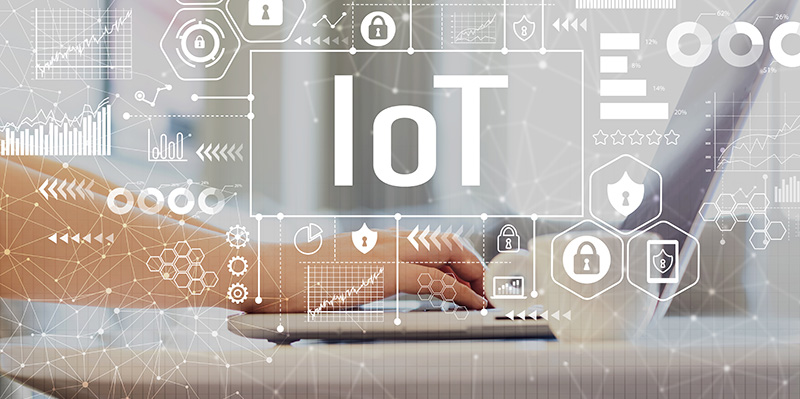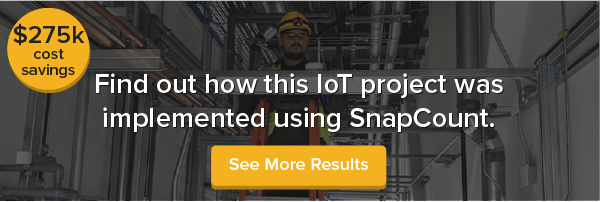
A lighting retrofit isn’t just about trading outdated bulbs for efficient LEDs. Nor is it just about saving energy.
A lighting retrofit is a perfect opportunity to optimize environments.
How occupants are able to use and experience a space can have a direct, measurable impact on their productivity, and thus the productivity of an entire organization.
As a lighting retrofitter, you have a unique opportunity to help your clients get the most out of their spaces, not just by improving the lighting, but by overhauling the way people use and experience the space.
This is why IoT design that includes solutions such as sensors, controls, and networks are natural additions to your retrofitting proposals.
Even if you don’t incorporate IoT, using some of these concepts can help you work with your customer to choose the right lighting solutions. This will significantly impact the user experience and therefore the productivity of people spending their time in these spaces – generating annual benefits that can easily outpace some upfront cost reductions.
Using Smart Controls to Design Lighting Zones
Have you ever tried to work in a space that was too dreary? Or have you ever tried to focus on a task with glaringly bright lighting overhead?
Multiple research studies have found correlations between lighting levels and the productivity and well-being of workers. We now know that different levels and temperatures of illumination are more conducive to different types of work.
Companies are already beginning to use controls to reduce energy usage – for example, dimming the lights in unoccupied areas. The ability to dim a space – rather than only being able to turn lights on and off – allows zones to become smaller and enables occupants to tailor the lighting in their zone to their specific needs, without distracting occupants in other zones.
However, implementing uniform 60-minute timeouts on large areas will likely reduce the opportunity to dim fixtures. Too often, retrofit controls are configured simply to avoid complaints, which ultimately risks leaving savings on the table.
Instead, with the right networked solutions, we can design more optimal lighting strategies because we don’t have to go back into the ceiling to change settings.
A major benefit of these connected lighting controls is granularity. Fixtures can be grouped together in zones or controlled individually. These zones ensure that office workers who need cooler, less aggressive light to focus on their computer screens can have it, while warehouse employees can have brighter lights to stay alert and more easily spot items on the shelf.
Also keep in mind that a fully networked system of lighting controls and sensors needs a central platform (such as Daintree Enterprise) to monitor and adjust lighting and color temperature levels, in order to achieve both maximum productivity and energy efficiency. A central platform also enables access to the sensor data so it can be shared with other software solutions to create additional value from that data.
No Space Gone to Waste
It’s helpful to view this balance in terms of ratios. Commercial real estate firm JLL introduced the “3-30-300 rule” as a way of thinking about how space, resources, and people are interconnected. For every square foot of space, JLL says, the typical organization spends:
- $3 annually for utilities.
- $30 annually for rent.
- $300 annually for payroll.
Looking at this equation, we can see how even incremental bumps in real estate utilization can pay off in big ways. A 10 percent increase in productivity translates to $3 of rent savings per square foot and $30 of payroll savings. It’s interesting to note that utility savings, which retrofitters often think about the most, comprises the smallest slice of the pie.
IoT technologies can help companies slash any of the 3-30-300 metrics. For example, daylight harvesting sensors embedded in LED fixtures reduce utility costs by taking advantage of the natural light of the sun. Occupancy sensors can turn lights off when rooms are empty.
But the most significant value comes from the data that networked occupancy sensors collect about how spaces are used. Occupancy data helps organizations determine whether space is under- or over-utilized. With this data, companies can make decisions that increase productivity (and thus, the largest segment in the 3-30-300 chain).
For example, have you ever had to walk around the office trying to find a spot to take a customer phone call? How many times have you huddled with a team in the hallway or around a too-tight cubicle because all the conference rooms were booked? If someone had to cancel a meeting at the last minute, would the room booking system know this? Or would the conference room sit unused – while your team sat in the hallway?
With real-time occupancy data, organizations can ensure these scenarios never happen (or happen less), making unused space instantly available to whoever needs it. This saves on both the $300 productivity budget as well as the $30 real estate costs budget.
As work has migrated from physical to online spaces, businesses are rethinking how they use their real estate. Offices are opening up, with spaces designated for specific tasks, rather than specific people. Seventy percent of people work remotely at least once a week (just like I am as I write this article). The average workstation has shrunk to half the size it was 10 years ago.
The new world of workplace layout is leaving many organizations with questions about how best to use their space. Contract or grow? Lose the walls or put more up?
Networked sensors can help businesses answer these questions, providing much more accurate occupancy data than manual headcounts ever can. These sensors also help ensure people have a positive experience when they are in the space and not frustrated by the new open office concepts.
How to Introduce IoT Solutions to Prospective Retrofitting Clients
As we’ve seen, when you add controls to the mix, energy efficiency is only a small piece of the cost-cutting potential of a retrofit project. Nevertheless, most prospective clients will only be thinking about dollars and kilowatt-hours. How can you expand the conversation to include networked controls, sensors, and a centralized IoT platform?
I find it’s best to start the conversation about controls early on, before you get to the proposal stage. That way, you’ll avoid surprising your prospect with confusing IoT options when they were only thinking about one-to-one replacement of fluorescent lights for LEDs.
During the audit phase, you’ll want to understand how occupants are currently using the space and how they’d like to be using the space. Dig deeper into their pain points.
Although the building manager is certainly important to this process, know that this individual may not be aware of all the pain points. For instance, the building manager may not realize that employees have trouble finding conference rooms, huddle rooms, or phone booths.
Instead, make a point to talk with multiple stakeholders, including the facility owner, HR managers, space coordinators, and the IT team, to ensure you have the full picture.
What the building or facility manager often does have is data. Their clipboard can be a valuable source of information about what data points the organization deems important. This can also set you in the right direction to design IoT solutions that collect this data automatically, which will ultimately enable the organization to gain better insights that further improve their productivity and lessen their energy consumption.
Changing Your Thinking About Retrofitting
The internet of things opens a world of possibilities for lighting retrofitters and their clients. Advanced controls represent an opportunity to take the conversation beyond lighting into how a space operates. Limitations such as a building’s existing wiring become less of an issue, thanks to the connectivity and flexibility of solutions like wireless adapters and addressable fixtures.
The market for lighting retrofits is exploding, but it can be difficult for retrofitters to differentiate themselves. By offering IoT design options, your business can stand out by helping your clients optimize not only their energy usage but their productivity and real estate investments.
Additionally, using a tool like SnapCount can make detailed audits easier to perform and therefore less time-consuming – thereby improving your ability to design the optimal IoT solution for your client.






Share this post: